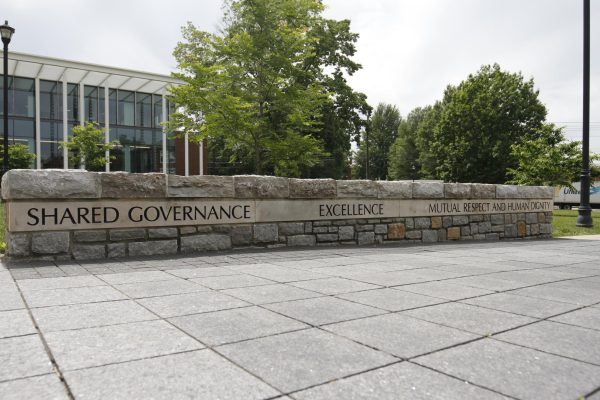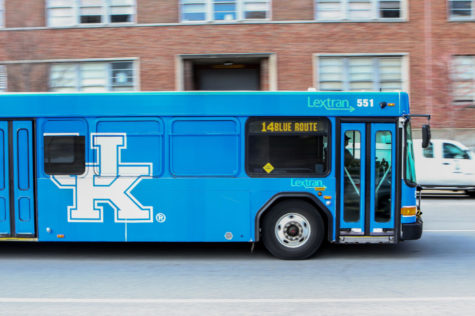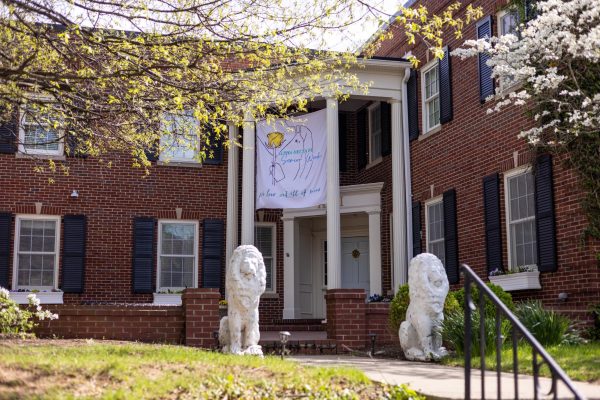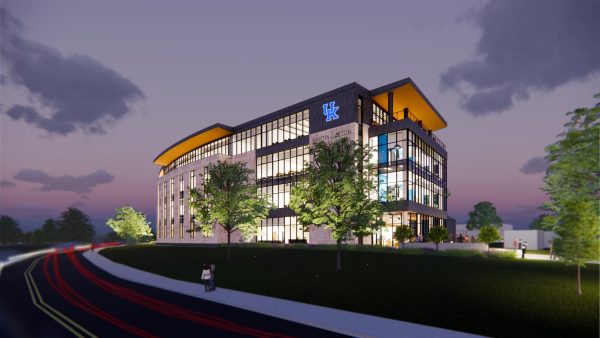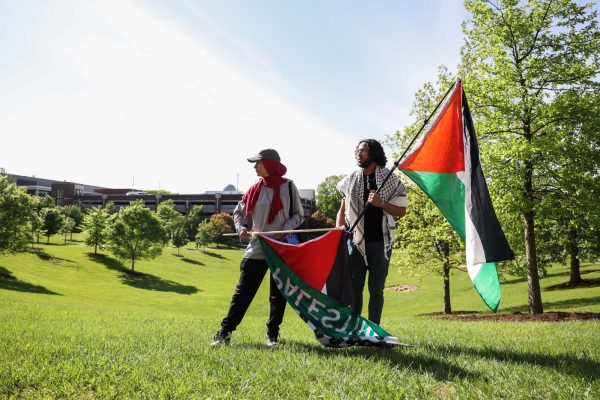Housing to get facelift
April 4, 2013
By Laura Shrake and Kelsey Harper | @KyKernel
UK students “see blue,” and their campus is seeing change, renovation and revitalization in different ways as part of an update to UK’s master plan.
The first changes will be made to on-campus residential housing.
But with fences and construction sites all over campus and chatter of future changes to the academic side of campus, those on UK’s campus are experiencing change everywhere they turn.
Here’s the breakdown of what is coming and going, where and when.
Phase I: Central I and II
Central I and II will bring 601 new beds to campus in August 2013, according to UK spokesman Jay Blanton.
The residence hall, which includes two four-story buildings directly adjacent to each other on what used to be Haggin Field, will have 450 beds reserved for Honors students, Blanton said.
Central I and II amenities
Central I and II will be built with more space, privacy and storage, as well as advanced technology.
The new dorms will not receive Wi-Fi through ResNet, but through a new system that has not yet been named.
The design of Wi-Fi access points will be specific to the number of units in the building and new technology will provide more speed.
Access cards will be used to unlock doors, which will eliminate the need for keys.
Penny Cox, housing project implementation director, is excited about the Active Learning Centers being implemented to improve students’ study habits.
The learning centers will include long tables, similar to the ones in W.T. Young Library, to make group work and collaboration easier, and lounge seating to provide more flexibility.
Cox also believes student engagement will be improved by the amphitheater that is to be built outside in the center of the buildings, inspired by the one next to Memorial Hall.
Phase IIA: Phase IIA has already begun construction on North and South campuses and will ultimately bring five dorms to four sites.
According to Blanton, north campus construction is on the land between Martin Luther King Blvd. and Lexington Ave., adjacent to Roselle Hall and Memorial Coliseum.
Part of construction for Phase IIA has also begun on South Campus. New dorms are being built where the Cooperstown Apartments formerly stood. According to Blanton, most of the complex has been demolished, but what remains will be decommissioned in June of this year.
To complete Phase IIA, Haggin Hall on Central Campus will also be demolished and a new dorm will be built in its place, with construction starting in May of 2013.
Blanton said Phase IIA is scheduled to be completed for the Fall semester of 2014, bringing 2,318 new beds to campus.
Phase IIB: This phase is subject to approval by the Board of Trustees in May, but is planned to include construction where the rest of Cooperstown Apartments, which was once campus graduate housing, currently stand.
Long-term goal of housing remodel:
One of the main reasons for the large-scale revitalization of campus is the consistent increase of incoming class size at UK.
“The class size this year is about 4,500 students and we are looking at approximately 4,800 students this coming fall,” Blanton said. “We want to accommodate them and we need the facilities to do that and do it well.”
According to the Housing Development plan, UK currently has 22 residence halls on campus that accommodate about 5,100 students. The average age of the halls is 44 years.
Of the nearly 5,100 beds, 600 of them are “modern” beds, which are housed in the premium dorms on campus (Smith, Ingles, Baldwin and Roselle).
“The hope is to ultimately tear down all but the 600 ‘modern’ beds and increase the 5,145 (beds) to between 7,500 and 9,000,” Blanton said.
The estimated cost of the project is about $500 million.
“President Eli Capilouto and the Board of Trustees feel it is very important for students to live on campus,” Blanton said. “They do better, graduate at higher levels and get involved more easily. That’s one of the reasons why we want to move so quickly (with this project).”
But giving residential housing a facelift does not come without difficulties.
“One of the challenges we have as we revitalize the campus core is that the institution is landlocked,” Blanton said. “We have limited space to grow and still maintain green space on campus.”
For the next five to seven years, Blanton calls UK’s challenge to keep as many beds as possible a “balancing act.”
For this reason, UK has outsourced some of its housing to an apartment complex. For the 2013-14 academic year, UK will have a master lease agreement with The Royal Lexington Apartments, according to Cox. This agreement includes 364 more beds.
“Our strategy is to maintain what we have,” Cox said. “It’s just a matter of doing the planning and getting new beds online before old beds are taken offline.”
Although on-campus housing will include The Royal Lexington apartment complex for returning students, only 500 beds will be guaranteed for returning students.
The university’s goal is not to fall below the threshold of having at least 5,100 beds available at any given time throughout this remodel.
Cox said that in the fall of 2013, with the destruction of Haggin Hall, the addition of Central I and II and The Royal Lexington apartments, there will be an increase of 61 beds.
Future plans for Central Campus:
Although Donovan Hall on Central Campus will be used as a residence hall for the 2013-2014 academic year, it will be demolished in May 2014 to make way for the new 230,000 square foot Academic and Science building.
“This new academic building will be a combination of classrooms and research space,” Blanton said. “The provost is currently looking at specific utilization of the space, but it will be both high tech adaptations of classrooms and research space.”
EdR:
In an effort to “fulfill the Kentucky Promise,” UK has partnered with Memphis, Tenn. company EdR, previously known as Education Realty Trust before the company went public in 2005.
“Right now our focus is on helping universities with their on-campus housing,” said Susan Jennings, vice president of corporate communications and marketing for EdR. “(The project at UK) will be EdR’s second opportunity to help revitalize a campus.”
The first renovation EdR was chosen to head was on the campus of Indiana University of Pennsylvania, which was the company’s largest project until they were offered UK’s project.
Tom Trubiana, the chief investment officer and executive vice president of EdR, said that the company currently has projects on campuses across the country at universities like Syracuse, California at Berkley, Florida and North Carolina Chapel Hill, totaling nearly 100,000 beds.
“We’re seeing more and more schools working to potentially seek assistance through partnerships,” Trubiana said. “I like to think we’re good listeners who collaboratively (with the university) work to figure out the needs of the school.”
As Blanton explained, the university is entering into a public/private partnership with EdR. The company will manage each new site upon the completion of each phase.
EdR will then earn back the private investment through the cost of rent to the student.











































































































































